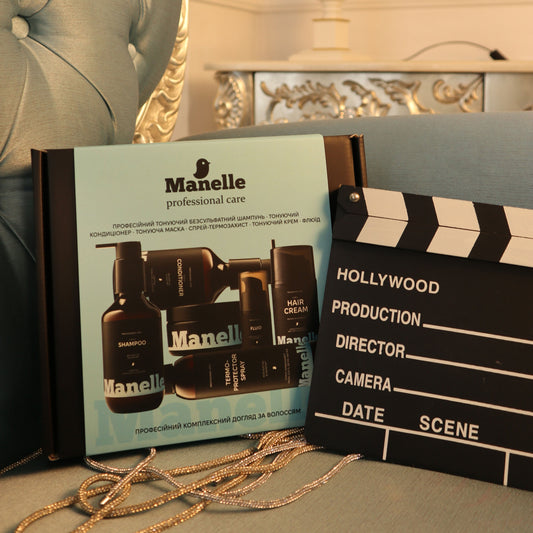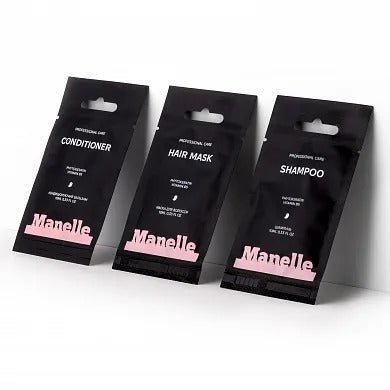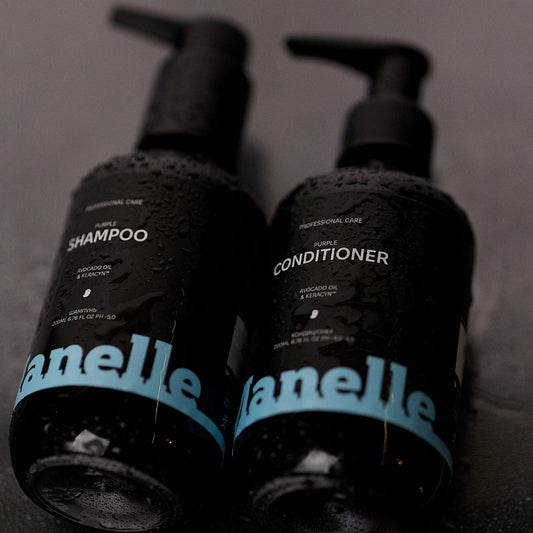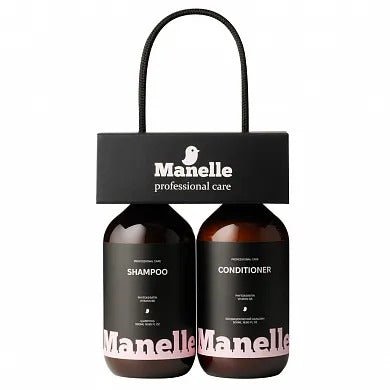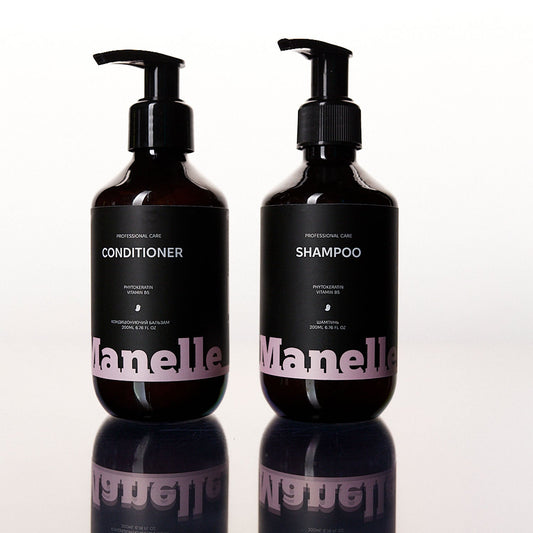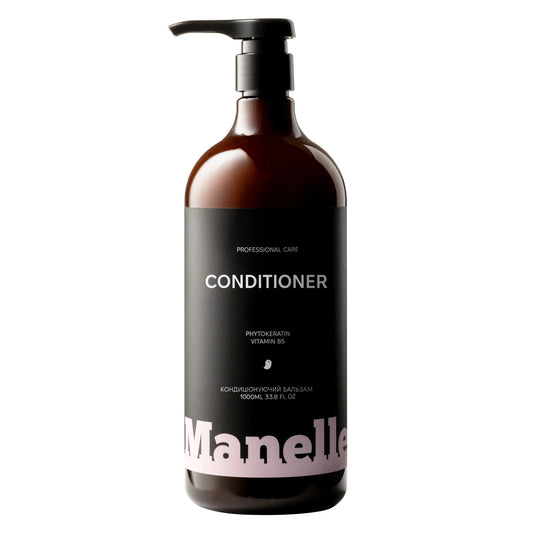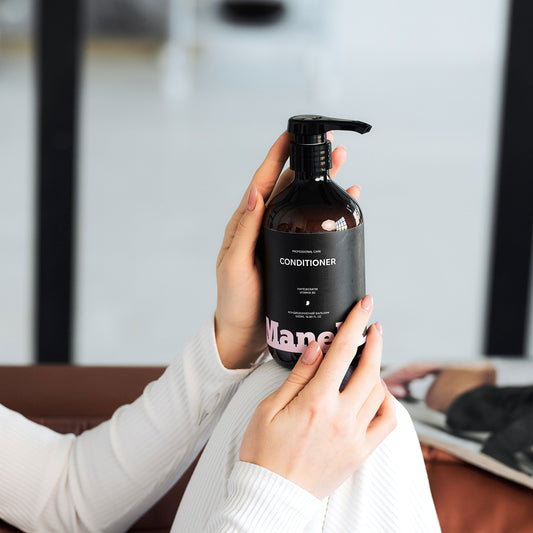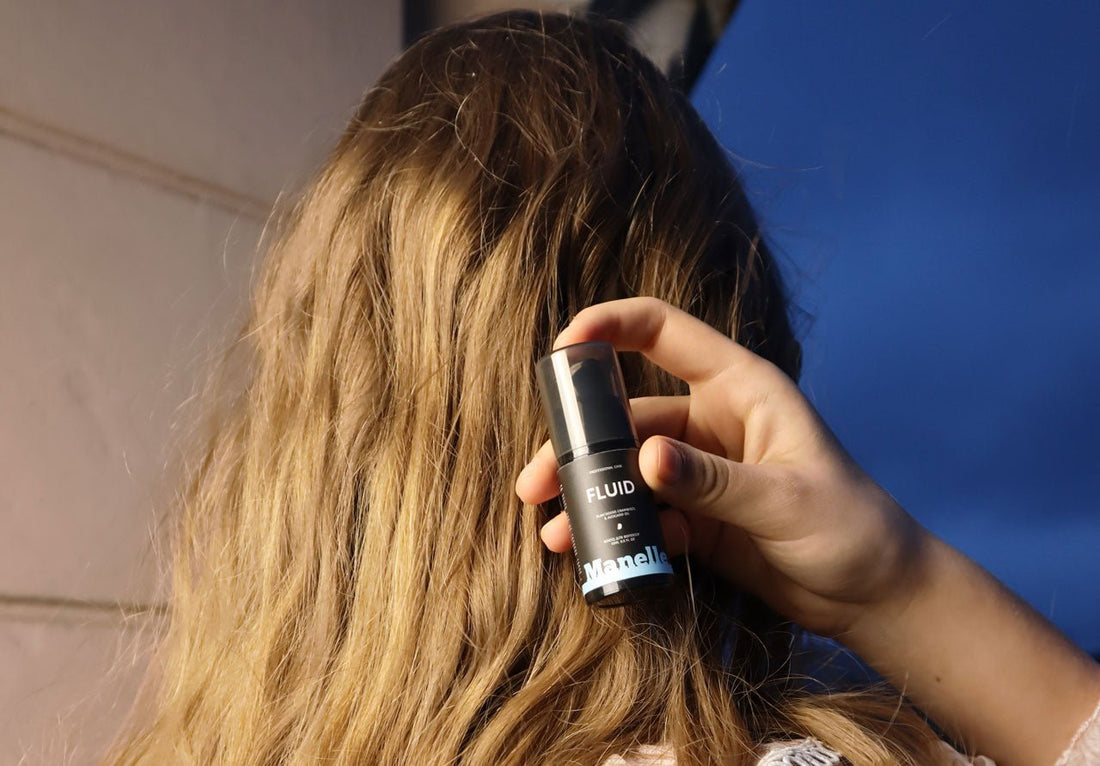
Hair restoration after dyeing: restore health and shine in 30 days
Hair coloring allows you to radically change your look and express your individuality, but it often leaves your hair dry, brittle and devoid of its natural shine. Hair restoration after coloring becomes a critically important stage that determines whether you will maintain beautiful color and healthy hair, or whether you will have to deal with the consequences of chemical exposure for a long time.
How coloring affects hair structure
The process of coloring can be compared to architectural reconstruction - to achieve a new look, the existing structure has to be partially destroyed. Ammonia and hydrogen peroxide, the main components of most dyes, penetrate deep into the cortex of the hair, dissolving the natural pigment melanin. This process inevitably damages the cuticle - the outer protective layer of the hair, which consists of scaly plates that overlap like tiles on a roof.
The lifting of the cuticle during coloring creates microscopic holes and cracks in the hair structure. This damage causes the hair to lose its natural oils, proteins, and moisture. The cortex, the inner layer that contains the bulk of the keratin fibers, also undergoes changes. Chemicals can break the disulfide bonds between keratin molecules, making hair weaker and more prone to breakage.
Hair is particularly damaged when lightened or dramatically changed color. The bleaching process requires prolonged exposure to harsh chemicals, which can result in the loss of up to 80% of the hair's natural proteins. The medulla - the central layer of the hair - can also be damaged, leading to a loss of elasticity and natural texture. Understanding these processes helps to choose the right recovery strategy.

Stages of professional restoration of damaged hair
Effective hair restoration after dyeing requires a systematic approach, which includes several consecutive stages. The first stage is deep cleansing and detoxification. Special detox shampoos remove chemical residues, accumulated toxins and impurities that can interfere with the restoration process. This stage can be compared to preparing the soil before planting - without high-quality cleansing, subsequent procedures will be less effective.
The second stage is intensive nutrition and hydration. Professional reconstructive masks with hydrolyzed proteins, amino acids and ceramides penetrate into the deep layers of the hair, restoring damaged bonds. Protein molecules fill the voids in the hair structure, and ceramides restore the lipid barrier of the cuticle. The procedures are carried out under the influence of heat and steam for better penetration of active substances.
The third stage is protection and consolidation of the result. Special serums and oils create a protective film on the hair surface, preventing the loss of restored components. New generation silicones and natural oils smooth the cuticle, restore shine and facilitate combing. Regular use of conditioners and leave-in products maintains the achieved results and protects against future damage.
Home recovery methods: effective masks and procedures
Hair restoration at home can be no less effective than salon procedures, if you choose the right products and adhere to regularity. Protein masks are the basis of home care for damaged hair. Egg white, rich in amino acids, can partially restore the protein structure of hair. A mask of two egg whites, a tablespoon of honey and a teaspoon of olive oil is applied to wet hair for 20-30 minutes under a plastic cap.
Oil wraps provide deep nourishment and restore the lipid balance of the hair. Coconut oil has the smallest molecular structure among natural oils, which allows it to penetrate directly into the hair cortex. Argan oil is rich in vitamin E and fatty acids, which restore damaged areas. A mixture of these oils in equal proportions, heated to a comfortable temperature, is applied to the hair from roots to tips for 1-2 hours.
An acidic rinse with apple cider vinegar or lemon juice helps smooth the cuticle and restore the natural pH of the hair after the alkaline effect of dye. A solution of one tablespoon of apple cider vinegar in a glass of water is used as a final rinse after each wash. Fermented rice rinses, rich in amino acids and B vitamins, are also effective in repairing damaged hair and adding natural shine.
Professional tools and procedures for quick recovery
The modern cosmetic industry offers a wide range of professional products for intensive hair restoration after dyeing. Keratin complexes are considered the most effective for restoring severely damaged hair. Hydrolyzed keratin penetrates the hair structure, filling voids and restoring natural strength. The keratin restoration procedure can restore up to 90% of lost proteins to the hair in one session.
Nanoplasty and hair botox represent new restoration technologies that work at the molecular level. Nanoparticles of active substances penetrate the deepest layers of the hair, restoring even critically damaged areas. Hyaluronic acid in the composition of such products provides long-lasting hydration, and amino acids rebuild the protein matrix. The result lasts from 3 to 6 months, depending on the condition of the hair.

Professional home-use lines allow you to maintain salon results between treatments. Sulfate-free shampoos enriched with proteins and ceramides gently cleanse without washing out restored components. Conditioners with low-molecular proteins and elixir oils for the ends of the hair become daily helpers in restoring hair health:
- Shampoos with hydrolyzed keratin and amino acids
- Conditioners with ceramides and natural proteins
- Intensive recovery masks with a vitamin complex
- Leave-in serums for protection and nourishment
- Oils for the ends with antioxidants and UV filters
Nutrition and vitamins to maintain healthy hair
External care will be incomplete without internal support of the body with the necessary nutrients. Hair is 95% composed of keratin - a protein, so sufficient intake of quality protein is critically important for recovery. Meat, fish, eggs, legumes and nuts should form the basis of the diet. Especially useful are foods rich in cysteine and methionine - amino acids that are part of keratin.
B vitamins play a key role in hair health. Biotin (B7) stimulates keratin synthesis, folic acid (B9) improves blood circulation in the follicles, and niacin (B3) ensures the delivery of nutrients to the hair roots. Green leafy vegetables, cereals, yeast and offal are the best sources of these vitamins. A deficiency in any of the B vitamins can slow down the hair growth process.
Minerals are equally important for hair health. Iron provides oxygen transport to the follicles, zinc regulates the work of the sebaceous glands and protein synthesis, and sulfur is a component of keratin. Seafood, red meat, pumpkin seeds and dark chocolate help replenish the reserves of these minerals. Sufficient water consumption - at least 2 liters per day - is also critical for the restoration of damaged hair.
Care mistakes that slow down recovery
One of the most common mistakes after coloring is overusing protein products. While protein is essential for repair, too much can make hair stiff and brittle. Hair needs a balance between protein and moisture, a principle known as protein-moisture balance. If your hair feels stiff after using protein masks, you may want to increase your moisturizing routine.
Using harsh surfactants can negate all your repair efforts. Sulfates, while effective at cleansing, can strip repaired proteins and color from damaged hair. Heat protection is often overlooked, even though high temperatures can cause additional damage to already weakened hair. Even sunlight can worsen damaged hair due to UV rays.
Key mistakes to avoid during recovery:
- Daily washing of hair with aggressive shampoos
- Using a hairdryer and curling iron without heat protection
- Frequent combing of wet hair with a regular brush
- Sleeping on cotton pillowcases that create friction
- Tightening hair with tight rubber bands and hairpins
- Ignoring regular trimming of split ends
Patience is also a key factor in successful recovery. Hair grows back gradually, and the first noticeable results appear after 2-4 weeks of regular care.
Color maintenance during hair restoration
Maintaining the brightness of your color during intensive hair restoration requires a special approach. Color-protecting shampoos and conditioners contain special polymers that create a protective film around the pigment molecules, preventing them from washing out. Cold or cool water for washing also helps preserve color, as hot water opens the cuticle and promotes pigment loss.
Tinting masks and shampoos can be an effective tool for maintaining color between salon treatments. They contain small concentrations of pigments that replenish lost color without additional damage to the hair. Such products are especially useful for blondes, who can combat unwanted yellowness with the help of purple pigments.
UV protection is becoming critical for preserving color, especially in the summer. Special sprays and creams with UV filters protect both color and hair structure from the damaging effects of sunlight. Natural oils, such as coconut or macadamia, also have natural SPF and can be used as additional protection.
Hair restoration after dyeing - the path to healthy and beautiful hair
Hair restoration after dyeing is a complex process that requires patience, the right approach and quality care products. Understanding how dyeing affects the hair structure helps to choose the most effective restoration methods and avoid common mistakes. Modern technologies and products allow not only to restore health to damaged hair, but also to preserve the brightness and beauty of color for a long time.
The key to successful recovery is to combine professional treatments with proper home care and a healthy lifestyle. Regular masks, the use of quality products without aggressive components, a balanced diet and protection from external factors create optimal conditions for natural hair regeneration. It is important to remember that each hair type is unique, and what suits one person may not work for another.
Investing time and money in restoring your hair after dyeing pays off not only by restoring its health and beauty, but also by allowing you to continue experimenting with color without fear of causing critical damage. Proper care allows you to enjoy vibrant colors while maintaining the strength, elasticity, and natural shine of your hair. Healthy hair is the foundation of any beautiful look, and it deserves the best care.



